Menu
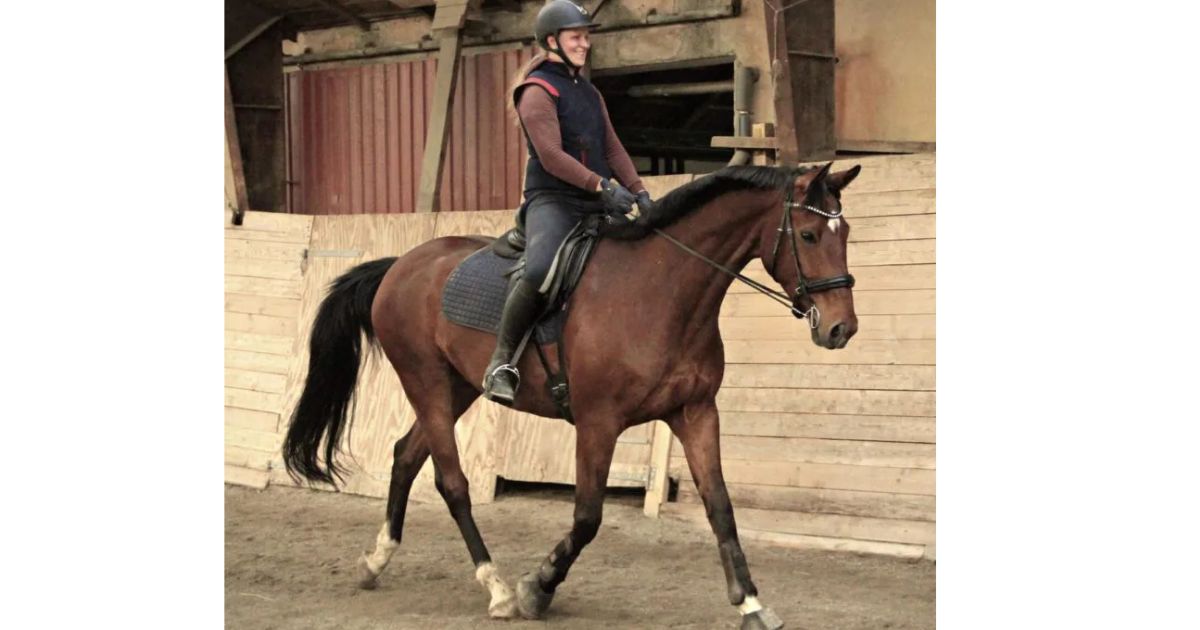
When a horse walks narrowly with its forelegs, swinging them in front of each other, it disrupts the good balance. In this article, you'll learn what the term "catwalk" entails, why it's a problem, how to spot it, and what training exercises can help remedy catwalking in your riding horse.
To provide the best foundation for a riding horse, it should be able to balance its forelegs straight down under its shoulder blades. Many riding horses tuck or "close" their forelegs, landing them not perpendicular to the ground. If this happens to both forelegs, the horse is said to be catwalking. It's similar to the way models place their feet one in front of the other in a straight line on the runway.
When a horse tucks/undertracks on one or both forelegs, the weight of the horse – and rider – gets distributed unevenly down through its forelegs, potentially causing overuse injuries. Therefore, it's crucial to help the horse balance its forelegs straight down under the shoulder blades.
Jeannette Glerup Skaarup, the author of this article, is behind the company Healthy & Durable Riding Horses by Jeannette Glerup. She brings with her:
Read also: Without stirrups: Gain better feeling, balance, and flexibility
The reason a horse can "catwalks" is due to its extremely flexible forequarters, stemming from the absence of a collarbone. This means there's no skeletal connection from the horse's foreleg into its chest. Thus, it's only muscles, tendons, and connective tissue that attach the horse's forelegs to the chest. This entire suspension is known as the thoracic or chest sling. Because this sling is highly flexible, it also means the horse can move and place its forelegs in three ways: it can tuck/undertrack, keep them in neutral/balance, or open each foreleg.
The horse's foreleg should be placed right under its shoulder blade to be in balance. If the foreleg moves towards the horse's center, it will tuck/undertrack, and the horse will walk catwalk (image 1). If the foreleg is drawn out from neutral, the horse will open its foreleg, avoiding catwalk. In this moment, the rider can ask the horse to follow the rein with the open turn to the right or left, so the horse lands perpendicular to the ground in a good balance (image 2).
To find out if your horse walks catwalk, it's most effective to have someone lead the horse on a straight path while you view it head-on. Look for whether the distance at the top of the horse's forelegs at the chest is similar to the distance where the hooves land. If the distance between the hooves is less than at the chest, the horse is tucking/undertracking either one or both forelegs. If it does so with both forelegs, it's catwalking, thus unevenly loading through its forelegs.
As a rider, you can work on sensing what the horse's forelegs are doing. Initially, it's often beneficial to have a helper or instructor on the ground acting as the rider's eyes while you practice. An exercise setup is described below.
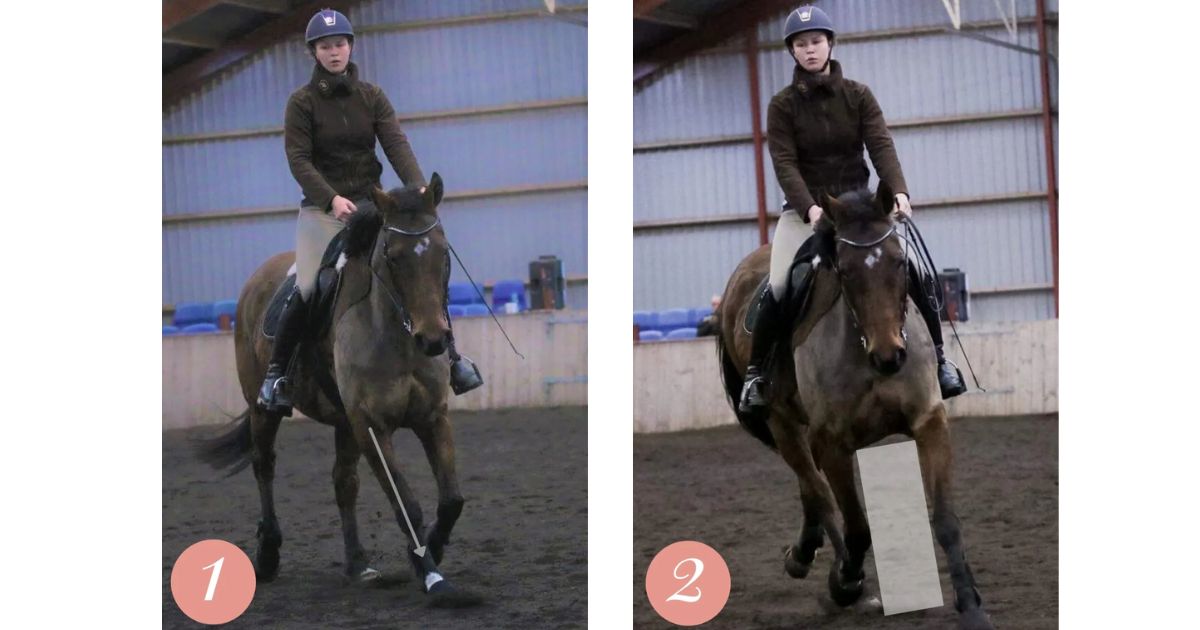
It's important for the helper or instructor to describe what each foreleg is doing just before it hits the ground. This way, the rider will learn to sense the horse's foreleg movements and can thereby adjust training and exercises accordingly.
Read also: Trainer: How to achieve the optimal and forward-Moving walk
During a training session, the balancing of the horse's forelegs can change many times, making it important for the rider to always sense what each foreleg is doing.
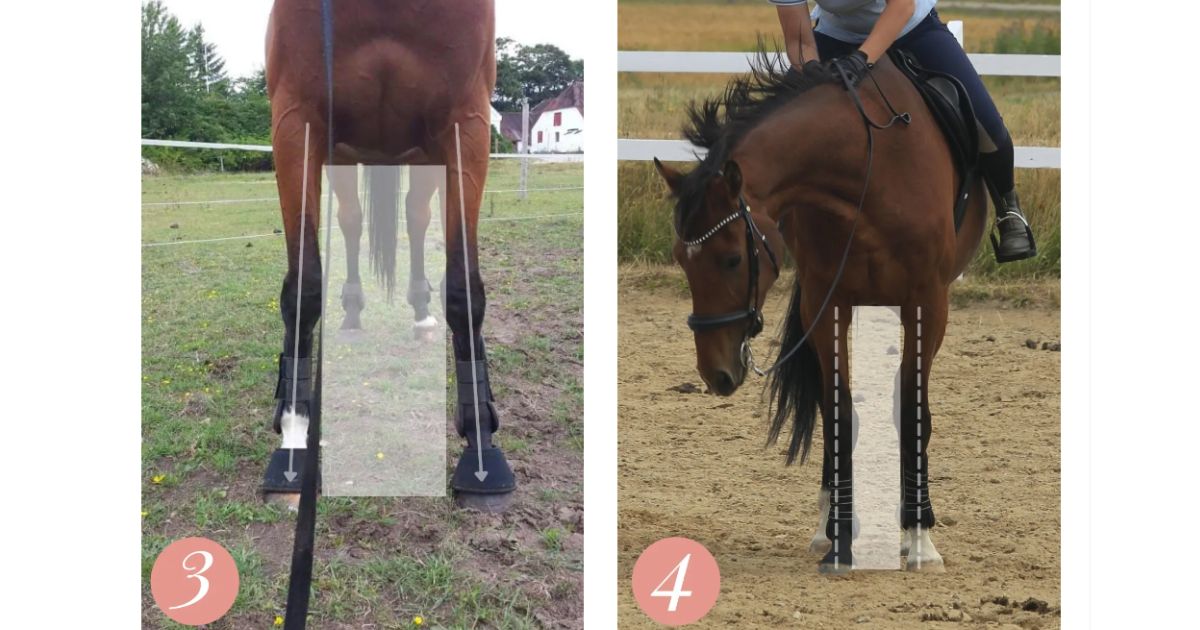
If the horse catwalks, it will tuck/undertrack on both forelegs. To remedy this, you need to get the horse to open its forelegs, thereby bringing them into neutral/balance right under the shoulder. The following exercises can be used for this purpose.
It's important to move your hand forward towards the horse's mouth in the turn, so the horse has the opportunity to keep its neck straight and at the same time extend its neck. This creates better working conditions for the horse's topline. It also prevents the horse from turning in the neck. The horse's foreleg should open while its neck remains straight.
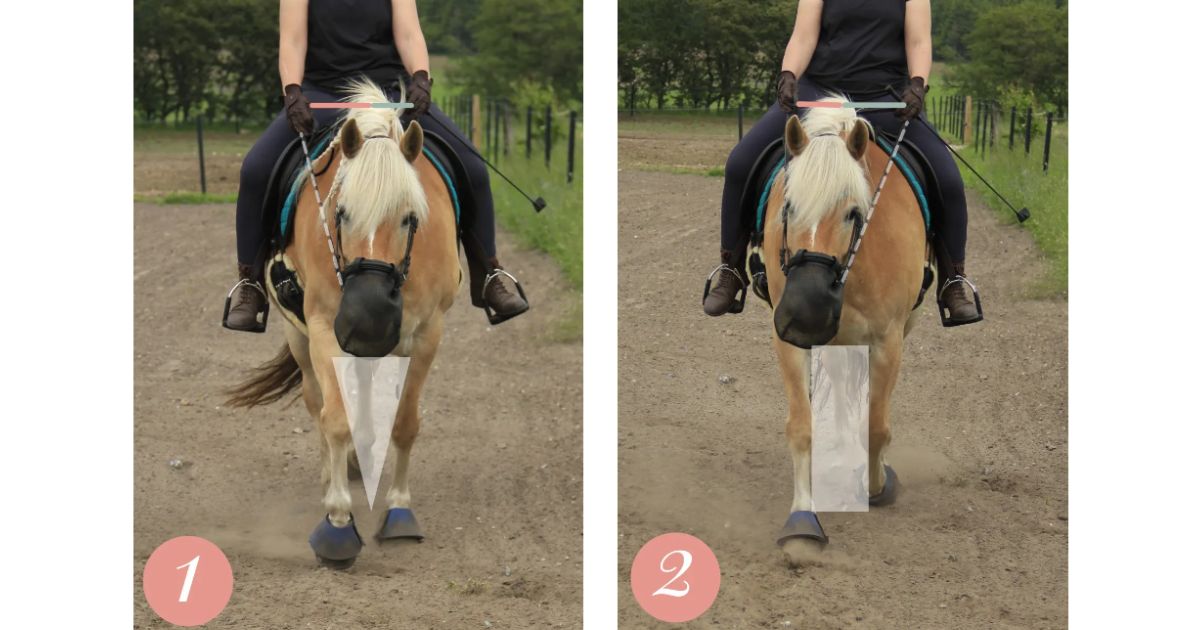
To give the horse the best conditions to open its forelegs and follow the rein, you should turn when the horse is standing on the opposite foreleg. If you want the horse to follow the rein and open the left foreleg, it should be standing on the right foreleg.
If you ask the horse to follow the rein and open the left foreleg while it's standing on the left foreleg, the horse has two options:
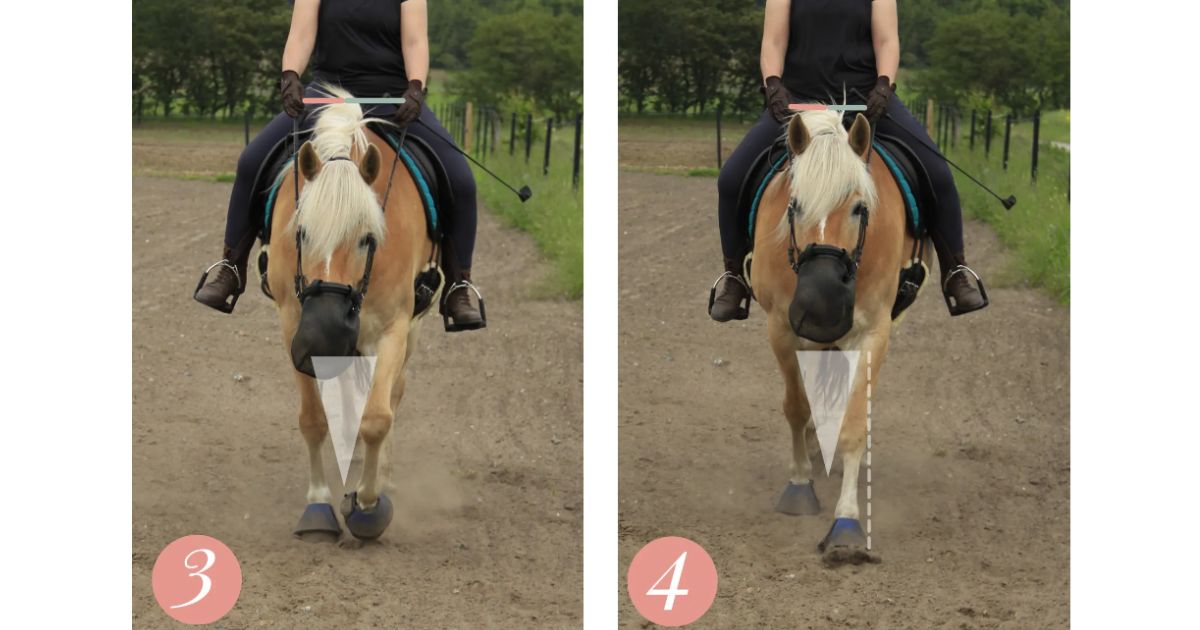
The above exercise can be used whenever you sense that the horse's foreleg is tucking/undertracking. As a rider, you just need to always be aware of the timing of your turn. When you ride a rising trot on the correct diagonal, you will sit down at the moment the horse has its outside foreleg on the ground. When the horse has the outside foreleg on the ground, its inside foreleg will be lifted from the ground, and you can therefore turn to the inside.
In summary, you can use the rhythm of the rising trot to think: “When I sit down, I can turn the horse to the inside, and when I stand up, I can turn to the outside.”
Read also: Saddle maker: "Our size often doesn't fit the horse"
This exercise can be used when you ride dressage exercises that change the horse's direction.
When the horse will stop catwalking depends on many different parameters. One of them is the rider's training effort. Each time the horse's foreleg is balanced straight down under the shoulder blade in neutral/balance, its body practices moving in the correct way. A healthy and sound riding horse will respond well to the training and gradually change its movement pattern after a few training sessions. If you as a rider find that the horse continues to walk catwalk or only tucks/undertracks with one of its forelegs, it could be due to anything from tensions in the thoracic sling to lockages in the horse's shoulder joint, elbow joint, a rotation of the ribcage, the rider sitting unevenly, or the need to restuff the saddle. It could also be because the horse is in pain in the foreleg and therefore compensates by tucking/undertracking it.